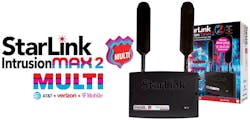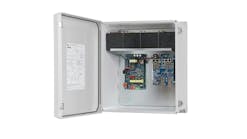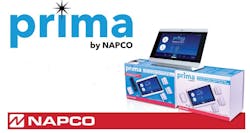All jurisdictions have Building Codes. Additionally, certain agencies and end-users will be subject to specific regulations relevant to their industry. Contracts often set forth compliance as a requirement in order for the project to be initially bid and then to be deemed successfully completed and payment to be made.
Electronic equipment carries UL Listings. Installation instructions will advise that in order for warranties to be honored, for the equipment comply, and for the equipment to perform as described, certain codes and standards must be observed.
For locksmiths, there is the question of liability, and the preservation of the company’s positive reputation. Business and liability insurance is a major expense, and required in many states.
For the technicians who actually perform the installation, there are issues of professionalism and ethics since most technicians are left to work under an honor system.
Many readers of the Locksmith Ledger started in the business before all these codes and standards even existed. Although it may seem otherwise, the old saying that “Ignorance is nine tenths of the Law” will not hold up in court.
So I wanted to begin our discussion of codes and standards with some free advice from the Security Industry’s most knowledgeable legal authority, Ken Kirschenbaum. Following are Ledger's questions and Kirschenbaum's answers.
LL: Many jurisdictions may have building codes which refer to these codes and standards, very often obtaining an alarm installer's license or other (credential required by the locality to install) does not require an applicant be able to demonstrate proficiency or knowledge of these codes. For example, in my state Virginia, mandated training for electronic security and locksmiths, the two categories which cover alarms cameras and access controls, does not really cover these in depth. The DCJS (Department of Criminal Justice Services) laws are basically to protect the consumers' privacy, and try to suppress unscrupulous individuals from victimizing end-user with over charging, identify theft and shoddy work. Network cabling is not subject to DCJS regulation, although more and more security infrastructure uses network infrastructure.
I do believe that the necessity of having a contractor's license is governed by the dollar value of the work to be performed.
Also in Virginia, regulation of fire alarm installers is not state-level, and subject to policies determined by the LAHJ.
KK: You should not confuse having a license and actually having the expertise to install or service alarm systems or perform the licensed work. If a license is required, then the licensing agency, typically the state or local municipality, generally comes up with minimum standards, educational or vocational requirements and of course fees. Civil and criminal consequences may result if there is unlicensed activity. When the licensing statutes govern residential consumer customers, the failure to have the required license may prohibit an unlicensed contractor from suing for unpaid money, even if the work is satisfactorily completed.
Building codes, on the other hand, establish a minimum standard for performance. Referencing recognized industry companies or laboratories that set and monitoring these standards permits flexibility in the law, since the standards are easier to change than the legislation, and in any event the companies setting these standards have the expertise, not the legislature.
LL: How does the installers' adherence to these codes indemnify the installer?
KK: Code requirements set minimum standards that are supposed to be customary trade practices, and by adhering to these standards, and executing the performance of the work in accordance with the standards, the contractor avoids claims of negligence. The contractor is not likely to be challenged on how or why work was performed in the way that it was when the performance met the standards in place at the time of performance.
LL: How does the installer's adherence to these codes protect the end-user?
KK: End users usually do not possess the knowledge or expertise to establish building codes for security devices. In fact, courts often apply the standard of "the least sophisticated consumer" when considering what a consumer should reasonably know. This low standard imposes further obligation on the contractor, licensed or not, to suggest, design and perform at minimum trade practices, and these practices are defined by codes and other legislation.
The NEC (National Electric Code) offers a reference for the installation of safe and reliable wiring. Electricians are trained in the National Electric Code, and must be able to display knowledge of the NEC in order to obtain an electrician’s license. Although electronic security utilizes both line voltage as well as low voltage, the majority of us who install security leave the line voltage side to electricians and concentrate on the low voltage portion of the systems.
Veteran alarm installers will remember the term “demarcation point” which was used to refer to the point at which the telephone company network ends and connects with the wiring at the customer premises. We never touched the telco’s side.
The hard-wired connection of line voltage to electronic security equipment is the demarcation point for many low voltage, security and network installers
Many states require that individuals who install low voltage wiring and equipment to get a license. Yet other states will mandate certification with a recognized security training curriculum. Where a license is required, knowledge of the NEC is a requisite.
Whichever is your dtate, or whatever is your state of mind; it seems that acquiring as much knowledge as possible would be a good idea.
Educational Opportunities
One avenue to acquiring a familiarity with the portions of the NEC with pertain to low voltage is a self-training course entitled “Understanding NEC Requirements for Limited Energy & Communications System” published by legendary code expert and trainer Mike Holt. Mike Holt’s articles on the NEC also appear in the trade press and on-line. It is based on the 2011 NEC. The NEC is revised every 3 years and the last revision is 2011, with the next 2014.
The book covers:
- Article 90 INTRODUCTION TO THE NATIONAL ELECTRIC CODE
- Article 300 WIRING METHODS
- Article 725 REMOTE-CONTROL, SIGNALING, AND POWER-LIMITED CIRCUITS
- Article 760 FIRE ALARM SYSTEMS
- Article 770 OPTICAL FIBER CABLES AND RACEWAYS
- Article 800 COMMUNICATIONS CIRCUITS
- Article 810 RADIO AND TELEVISION EQUIPMENT
- Article 820 COMMUNITY ANTENNA TELEVISION (CATV) AND RADIO DISTRIBUTION SYSTEMS
The text comes with loads of test quizzes so you can determine of you’ve absorbed the lessons, and also help you to prepare if a licensing exam in your professional future
Mike Holt Enterprises is a family run business that specializes in training products for the electrical industry. Their commitment is to serve the needs of the Electrical Professional. This is their sole focus and they are the top publisher in the industry that strictly focuses on Electrical Education. One important factor for this success is Mike Holt’s ability to break extremely technical concepts down into an illustrated format while also focusing in on the most essential elements of those rules.
Belynda Holt Pinto, COO, put it this way. "We are dedicated to changing people's lives through electrical education."
For more information, visit www.mikeholt.com.
NFPA 80
Beside the National Electric Code, the NFPA (National Fire Protection Association) also publishes standards used by the electronic security industry:
NFPA 80 The Standard for Fire Doors and Other Opening Protectives regulates the installation and maintenance of openings in walls, floors and ceilings against the spread of fire & smoke within, into or out of buildings. These basic guidelines for fire rated doors, and doors in the path of egress provide the rules AHJ enforce and the levels of safety to which we aspire. The most recent version was published in 2010.
Life Safety Code
NFPA 101 (2009) The Life Safety Code addresses life safety from fire including smoke, fumes and panic, and identifies the minimum criteria for design of egress facilities.
Sections of NFPA 101 & NFPA 80 are devoted to specifics such as:
- Doors
- Locks Latches & alarm devices
- Special Locking Arrangements
- Panic Hardware & Fire Exit Hardware
- Self-Closing devices
- The inspection of Door Openings
ADA
The Americans With Disabilities Act (ADA) is a civil rights law which ensures that equal access be provided for all citizens of the United States not only for those with disabilities but for the general public as well. Under Title III of the ADA, no individual may be discriminated against on the basis of disability with regards to the full and equal enjoyment of the goods, services, facilities, or accommodations of any place of public accommodation by any person who owns, leases (or leases to), or operates a place of public accommodation.
There are several factors you must consider to ensure an opening is ADA compliant.
- Latch requirements for an opening
- Characteristics of a clear opening (thresholds, height, width)
- Maneuvering Clearances
- Opening force requirements for an opening
Obstacles for a manual door closer - Closing speed requirements for a door
- Identify the need for an automated opening
- Minimum speed requirements for an auto operated door
UL 294
UL 294 is a comprehensive standard developed by UL which is increasingly being adapted by manufacturers, architects and installers of electronic access control.
These requirements apply to the construction, performance, and operation of systems intended to regulate or control:
a) Entry into a protected area or a restricted area or
b) Access to or the use of a device(s) by electrical, electronic or mechanical means.
As is the case with most standards, UL294 references other existing standards, and seeks to establish definitions as well as safety and performance requirements helpful in designing access control components, installing access control systems, and evaluating the performance of the system once installed.
Make it your goal to familiarize yourself with these codes and standards. By knowing and understanding them you limit your liability, better protect your customers, can be assured you are adhering to prevalent best practices, and by knowing the baseline requirements you can differentiate your company in the marketplace with systems designed to exceed the published minimums.
Tim O'Leary
Tim O'Leary is a security consultant, trainer and technician who has also been writing articles on all areas of locksmithing & physical security for many years.






